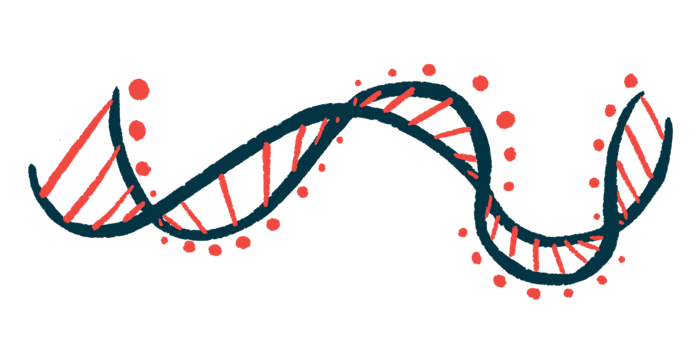Some sporadic ALS patients have mutation causing other diseases
Study used whole-genome sequencing data to look for STR expansions

A sizable portion of people with sporadic amyotrophic lateral sclerosis (ALS) carry a genetic mutation known to cause other neurological disorders, a new study shows.
“This suggests shared risk factors among these diseases, shared mechanisms that cause nerves to die – and perhaps shared therapeutic strategies in the future,” Kelly Williams, PhD, associate professor at Macquarie University in Sydney and co-author of the study, said in a press release. “While the causes of sporadic [ALS] and FTD [frontotemporal dementia] remain unknown, this is an important step in a long-term effort to identify the risk factors for developing one of these diseases.”
The study, “Short tandem repeat expansions in sporadic amyotrophic lateral sclerosis and frontotemporal dementia,” was published in Science Advances.
ALS is characterized by the gradual death and dysfunction of motor neurons, the nerve cells that control movement. While some mutations have been linked to ALS, the vast majority of people with sporadic ALS have no known mutation associated with the disease.
STR expansion can disrupt gene function, cause disease
Within a person’s DNA, many genes contain short tandem repeats (STRs) — sequences where a few nucleic acids (the building blocks of DNA) are repeated over and over again. These repetitive regions are important for regulating gene activity.
Sometimes, the repetitive region in STRs will duplicate or expand, so the repeat becomes much longer than normal. This type of mutation, called an STR expansion, can disrupt gene function and cause disease. In fact, the most common ALS-causing mutation is an STR expansion in the gene C9ORF72.
STR expansions in other genes have been shown to cause other neurological disorders. For instance, an STR expansion in the gene HTT is the cause of Huntington’s disease, while STR expansions in the genes ATXN1, ATXN2, and ATXN8 cause a group of movement disorders known as spinocerebellar ataxias.
Research on STR expansions has historically relied on time-consuming laboratory tests, but with the recent development of whole-genome sequencing — technologies that can determine the entirety of a person’s genetic code — it is now much easier to look for these expansions in large groups of patients.
In this study, scientists based in Australia used whole-genome sequencing data to look for STR expansions in people with ALS or the related condition frontotemporal dementia (FTD).
The study included data on 608 people with sporadic ALS, 68 with sporadic FTD, and 4,703 control subjects with no known neurological disease. The researchers specifically looked for 21 STR expansions that have been linked with other neurological disorders.
Among the sporadic ALS patients, 48 carried a mutation that had previously been connected with the disease; 41 had an STR expansion in C9ORF72, three had a mutation in the SOD1 gene, and four had mutations in the TARDBP gene.
Among all 676 ALS and FTD patients, 119 (17.6%) harbored an STR repeat expansion in a gene that’s traditionally been associated with another disease. There were 12 patients (less than 2%) with expansions in more than one of these genes.
“We found almost 18 per cent of sporadic [ALS] and FTD patients carried a DNA repeat expansion thought to be involved in other degenerative diseases,” said Lyndal Henden, PhD, a co-author of the study at Macquarie University. “Finding this genetic connection between [ALS] and FTD offers a fresh opportunity to uncover common risk factors for neuron death, and it will have implications for understanding both diseases.”
Diagnoses consistent with ALS despite other mutations
In most cases, the detected mutations were intermediate expansions — that is, the STR region contained more repeats than normal, but not so many as to be disease-causing. However, a handful of patients were found to have known disease-causing repeat expansions in genes including the spinocerebellar ataxia genes ATXN8 and ATXN1, as well as FMR1, which causes fragile X syndrome.
Despite having mutations shown to cause other diseases, clinical data from all these patients “were consistent with a diagnosis of ALS,” the researchers wrote.
STR expansions also were seen in more than 1 out of every 10 patients without the disease. However, when including all genes assessed, the overall rate of STR expansions was significantly higher among the patients with ALS or FTD compared with controls (23.2% vs. 16.3%). The researchers stressed further studies will be needed to verify whether and how these mutations influence the development of disease.
“Rare repeat expansions, such as these identified in this study, may be truly associated with disease risk; however, larger ALS and FTD patient cohorts will be required to determine their significance to disease,” they wrote.







